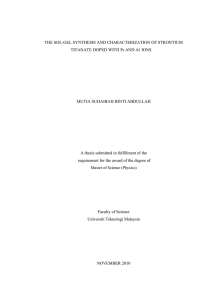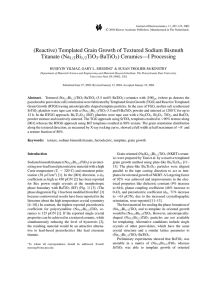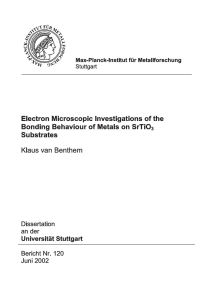Title Goes Here
advertisement
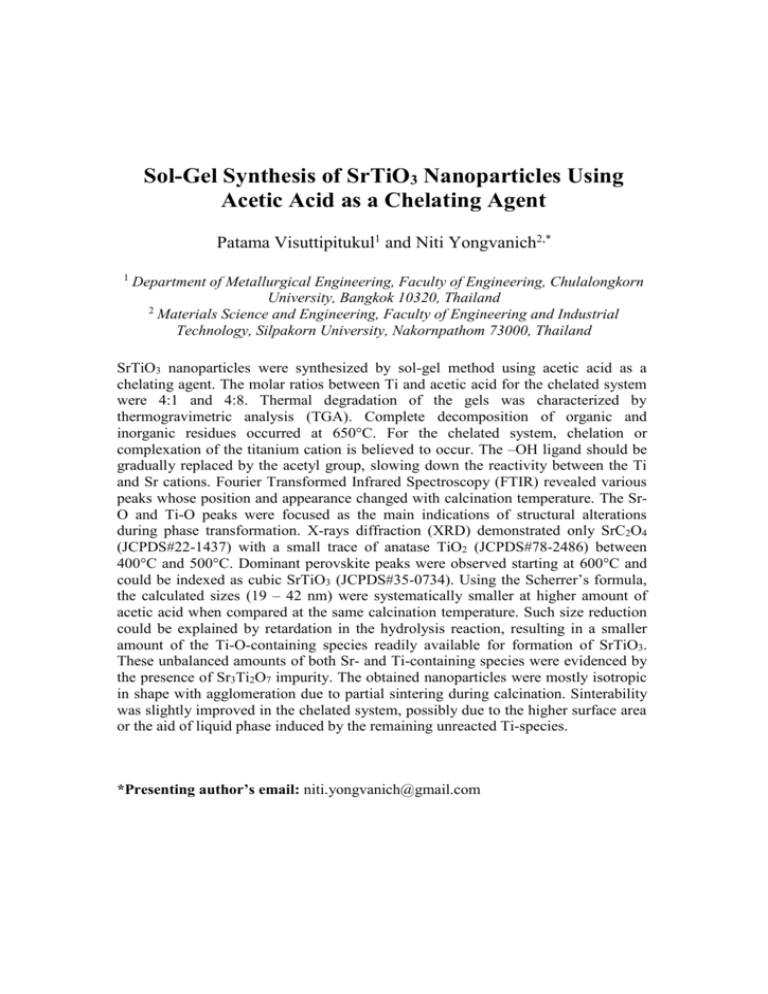
Sol-Gel Synthesis of SrTiO3 Nanoparticles Using Acetic Acid as a Chelating Agent Patama Visuttipitukul1 and Niti Yongvanich2,* 1 Department of Metallurgical Engineering, Faculty of Engineering, Chulalongkorn University, Bangkok 10320, Thailand 2 Materials Science and Engineering, Faculty of Engineering and Industrial Technology, Silpakorn University, Nakornpathom 73000, Thailand SrTiO3 nanoparticles were synthesized by sol-gel method using acetic acid as a chelating agent. The molar ratios between Ti and acetic acid for the chelated system were 4:1 and 4:8. Thermal degradation of the gels was characterized by thermogravimetric analysis (TGA). Complete decomposition of organic and inorganic residues occurred at 650°C. For the chelated system, chelation or complexation of the titanium cation is believed to occur. The –OH ligand should be gradually replaced by the acetyl group, slowing down the reactivity between the Ti and Sr cations. Fourier Transformed Infrared Spectroscopy (FTIR) revealed various peaks whose position and appearance changed with calcination temperature. The SrO and Ti-O peaks were focused as the main indications of structural alterations during phase transformation. X-rays diffraction (XRD) demonstrated only SrC2O4 (JCPDS#22-1437) with a small trace of anatase TiO2 (JCPDS#78-2486) between 400°C and 500°C. Dominant perovskite peaks were observed starting at 600°C and could be indexed as cubic SrTiO3 (JCPDS#35-0734). Using the Scherrer’s formula, the calculated sizes (19 – 42 nm) were systematically smaller at higher amount of acetic acid when compared at the same calcination temperature. Such size reduction could be explained by retardation in the hydrolysis reaction, resulting in a smaller amount of the Ti-O-containing species readily available for formation of SrTiO3. These unbalanced amounts of both Sr- and Ti-containing species were evidenced by the presence of Sr3Ti2O7 impurity. The obtained nanoparticles were mostly isotropic in shape with agglomeration due to partial sintering during calcination. Sinterability was slightly improved in the chelated system, possibly due to the higher surface area or the aid of liquid phase induced by the remaining unreacted Ti-species. *Presenting author’s email: niti.yongvanich@gmail.com
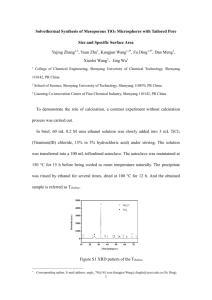
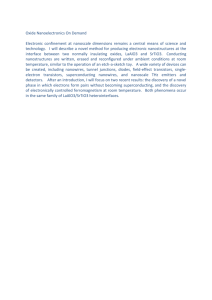


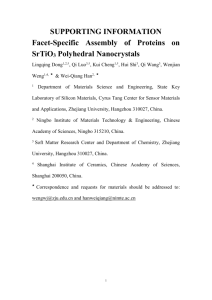
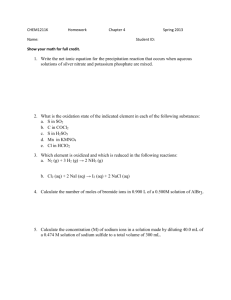




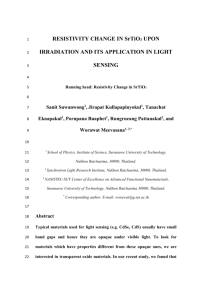
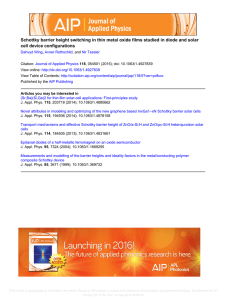
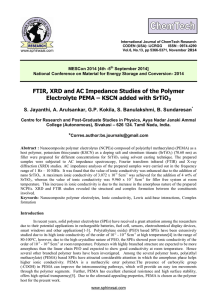
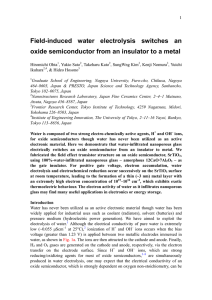
![Interface structure and film polarization in epitaxial SrTiO[subscript 3]/Si(001) Please share](http://s2.studylib.net/store/data/012603268_1-4053b32cbb539a26821369504da820a8-300x300.png)
